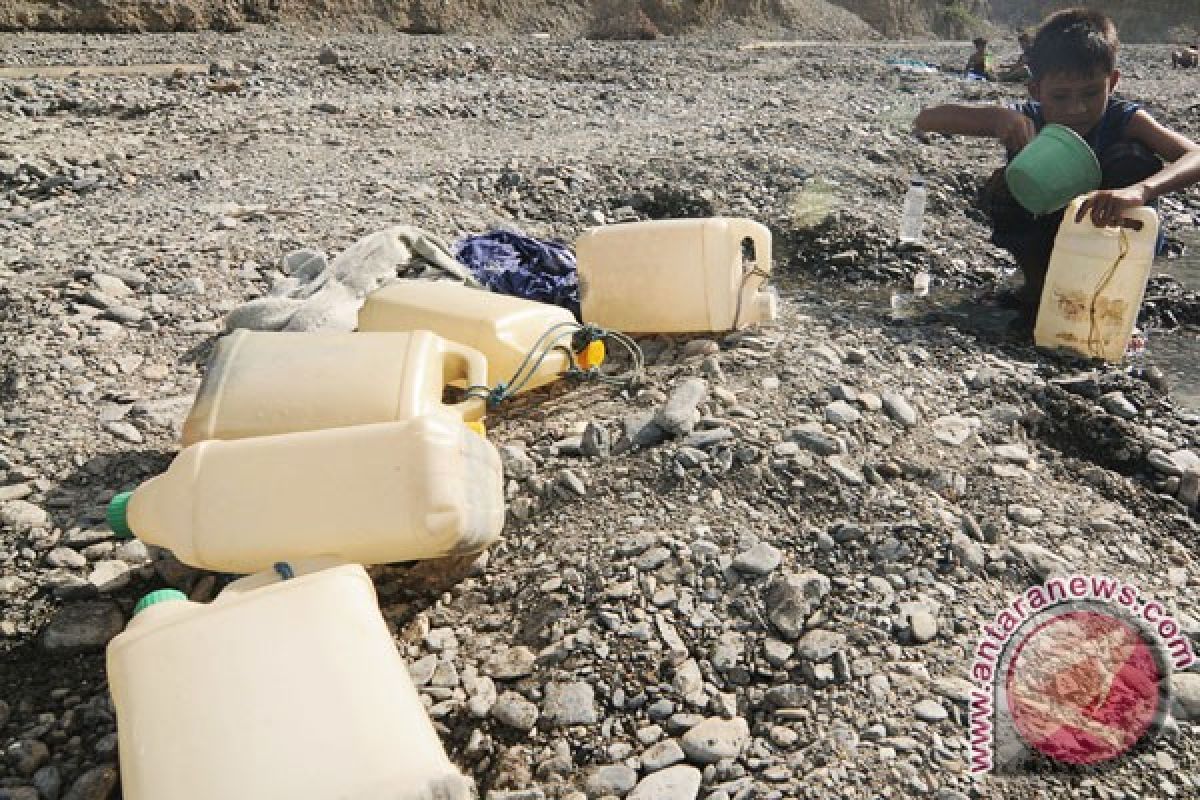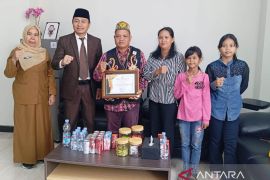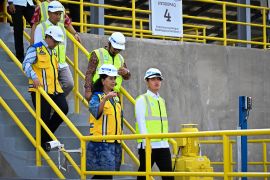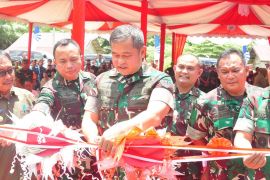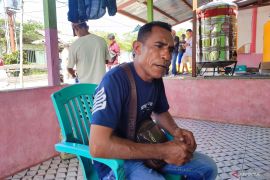A number of people in Tanjungpinang city, Riau Islands province, have been facing a scarcity of clean water since last week, as the city has not received any rainfall for three months.
"Over the past week, with my well drying up, we have been finding it increasingly difficult to get clean water," said Lisa, a resident of Indonusa Lestari Batu 8 housing complex in Tanjungpinang, on Sunday.
Elsewhere, a clean water crisis is looming over 28 villages in Lebak district, Banten province, due to the extreme dry conditions prevailing there since the past few weeks.
"We keep coordinating with the local drinking water company to supply clean water to drought-affected areas," Lebak District Natural Disaster Mitigation Board (BPBD) executive chairman Muklis stated on Sunday.
The residents of the 28 villages, situated in the Wanasalam, Sajira, Cipanas, Cilograng, and Cimarga sub-districts, are slowly running out of clean water after their wells and other water sources began drying up.
"With no rain over the past few weeks, I think the drought has started. However, we are making every effort to help those who are facing clean water shortages," Muklis said.
He noted that the people living in the drought-hit areas had started using the river water for drinking, bathing, and washing purposes despite running the risk of getting diarrhea.
"We have asked the people to boil the river water before consumption in order to prevent communicable diseases," Muklis added.
Many residents in Cimarga sub-district admitted that they have begun using the water from Cisimeut river for bathing and washing purposes.
"I am used to using river water whenever there is a clean water crisis due to drought," Maman, a local resident, said.
In West Nusa Tenggara province, the local Social and Demographic Service and Vital Statistics Office is collecting data on residential areas that are facing a shortage of clean water during the ongoing dry season.
"We are preparing a list of affected areas and will soon supply clean water to those areas through water tanks. Almost every year, we distribute clean water to residential areas in Lombok island, which faces clean water shortage because of drought," said Bachruddin, head of the office, on August 31.
However, he expressed optimism that fewer areas in the province would be affected by drought conditions this year, in comparison to previous years, due to adequate rainfall.
Besides, Bachruddin continued, local authorities will keep supplying clean water to the affected areas, in line with the main functions of the office.
"Last year, we supplied clean water to 14,183 households, or about 50 thousand people, in four districts in Lombok island. The number is likely to fall this year," he added.
In previous years, the local authorities began supplying clean water to affected areas either from late August or early September, until the rains arrived sometime in October.
Another drought-prone area is Medana village, Tanjung sub-district, North Lombok district, which is home to about 800 families. The main sources of clean water there are wells, which usually run dry when rainfall is low.
The only sources of clean water for the residents of Medana during the times of drought are small dams, but those too dry up when there is a severe drought.
More than 14 thousand families across four districts in Lombok island experienced clean water shortages in 2012. Among them, close to 8 thousand lived in hamlets in the sub-districts of Jerowaru and Keruak in East Lombok district.
In Cianjur district, West Java, approximately 7,000 hectares of paddy fields are under threat after the water supply from Cikondang river dropped by almost half.
Cibeber sub-district head Ucup Supriyadi Dithamiharja said on Sunday that many paddy fields were likely to dry up due to reduced water supply from the rivers in the sub-district.
"Cikondang river has so far irrigated thousands of hectares of paddy fields in five villages. In the event of a drought, we have no solutions to overcome it but we are making efforts to use the irrigation system as efficiently as possible," he said.
In anticipation of drought this year, the government is keeping a close watch on the water levels of several dams across the country.
"Based on our monitoring at the Jatiluhur, Cirata and Saguling dams, the water levels are normal," Water Sources Director of the Public Works Ministry Arie Setiadi Moerwanto said on Saturday.
In the middle of last month, the government reported that 15 large dams had normal the water levels, while one large dam had a critically low water level. As for smaller dams, the government revealed that the water levels were normal in 42 had reached the critical limit in nine.
Moerwanto said Indonesian officials expect adequate water supplies during this year`s dry season.
The ministry reminded farmers that in the event of a drought, they must maintain their planting schedules, efficiently use water for irrigation, and put in place water-efficient practices.
The government distributes water pumps, repairs and maintains existing reservoirs, as well as provides farmers with new rainwater collection technologies.
Of the country`s 3.9 trillion square meters of raw water, only 14 billion square meter are managed through the nation`s reservoirs.
(S012/INE/KR-BSR)
Reporter: Suharto
Editor: Jafar M Sidik
Copyright © ANTARA 2013
